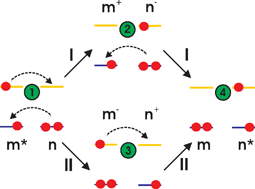Electronic excitation energy transfer in molecular systems is connected with the de-excitation of one molecule and the excitation of the other. Mostly, it can be understood in terms of Förster (or fluorescence) resonance energy transfer. An increasing interest in the optimization of artificial light harvesting systems, however, requires a more detailed study going beyond the standard Förster scheme. There are two main routes to do this. Considering a Coulombic less-strongly coupled system first, coherences among different chromophores may be considered in the framework of perturbation theory with higher-order mechanisms correcting the standard second-order description. Secondly, if inter-chromophore coherences are dominant and delocalized Frenkel-exciton states are formed, it becomes of some importance to study their decay due to the coupling to vibrational degrees of freedom. While we will also comment on this latter mechanism, the first description based on localized excitations will be the main focus. A general higher-order theory resulting in respective transition rates and rate equations is utilized. Its capability is demonstrated when presenting a systematic description of short-range and long-range corrections to the basic Förster mechanism. Accordingly, a unique description of bridge-mediated and photon-mediated long-range electronic excitation energy transfer is offered. Moreover, short-range excitation energy transfer appearing as a two electron exchange is also discussed. And, the exciton–exciton annihilation process present at higher optical excitation intensities is described as a direct higher-order transition. The related higher-order vibrational correlation functions are presented and estimated for the reference case where the coupling to vibrational degrees of freedom either of intra-molecular or inter-molecular type is reduced to a simple electronic state dephasing process.

You have access to this article
 Please wait while we load your content...
Something went wrong. Try again?
Please wait while we load your content...
Something went wrong. Try again?


 Please wait while we load your content...
Please wait while we load your content...